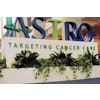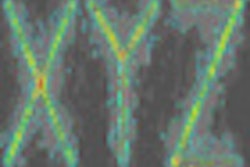High-risk prostate cancer patients who have radiation added to their regimen of androgen deprivation therapy have an improved chance of survival compared with patients who only get hormone therapy, according to a study to be presented at next week's American Society for Radiation Oncology (ASTRO) meeting in San Diego.
The study should help clear up some of the ambiguity over treatment of men with high-risk prostate cancer, many of whom are not currently receiving radiation therapy. The combined treatment should become the standard of care for prostate cancer patients with localized advanced disease, recommended Malcom Mason, MD, a radiation oncologist at Wales' Cardiff University in the U.K.
The research was among several studies highlighted in an October 25 press conference held by ASTRO of Fairfax, VA, to announce key findings that will be formally presented at its annual meeting being held in San Diego from October 31 to November 4.
Reducing risk of death
Mason reported that after following 1,205 men for an average of six years, the addition of external-beam radiation therapy to androgen deprivation therapy reduced the risk of death from prostate cancer by 43% seven years after treatment.
The primary objective of the international clinical trial was to assess the effect of radiotherapy on overall survival when added to lifelong androgen deprivation therapy
"The trial was initiated at a time when the predominant view by clinical oncologists was that these patients should receive hormone therapy only," Mason explained.
"Hormone therapy was and is very commonly used as a treatment for prostate cancer. But when this clinical trial was developed, the role of radiotherapy being an effective treatment for men who had a high risk of recurrence wasn't yet established. We set out to define this."
After being randomized to receive either hormone therapy only or both hormone therapy and radiotherapy, the 1,205 men received treatment between 1995 and 2005 at hospitals in Canada, the U.K., and the U.S. The 603 patients in the combined treatment group received a radiation dose of 65 to 69 Gy to the prostate and/or seminal vesicles and radiation to the pelvic nodes up to 45 Gy.
As of January 1, 2009, 320 men had died. Of these, the deaths of 140 men, or 44%, were specifically attributed to prostate cancer and/or treatment. Sixty-four percent received hormone therapy only, and 36% received the combined therapy. The disease specific survival hazard ratio was 0.57 favoring the combined treatment.
Ten-year cumulative disease-specific death rates have been estimated as 23% for patients who received only hormone therapy, as compared with 15% receiving the combined therapy.
Mason reported that there were no increased long-term side effects associated with the treatment. Grade 2 or greater late gastrointestinal toxicity rates were similar in both groups, at 1.3% for the hormone therapy only group and 1.8% for the combined treatment group.
"There is still much variation in the treatment for men with localized, high-risk prostate cancer, and it is a hotly debated topic. While the number of men treated with combined hormone and radiation therapy has increased in recent years, there are still many patients treated with hormone therapy alone," Mason said.
In the U.S. alone, nearly a quarter of a million men are diagnosed with prostate cancer each year, and approximately 28,000 die from the disease, according to statistics from the American Cancer Society.
"The paradox of prostate cancer is that we can cure men with mild cases of the disease who may not require treatment to survive, and we haven't been able to cure men with the lethal form of the disease," noted Andrew Zeitman, MD, president of ASTRO. "The interim findings of this clinical trial, the importance of which caused an independent data monitoring committee to recommend they be released, represents a delightful outcome for men with locally advanced diseases."
Mason will be presenting this study at ASTRO's plenary session on November 1, 2010.
By Cynthia E. Keen
AuntMinnie.com staff writer
October 25, 2010
Related Reading
Local treatment boosts androgen-deprivation therapy in prostate cancer, June 16, 2010
Radiotherapy prolongs survival with locally advanced prostate cancer, June 8, 2010
MedCAC bombarded with info about prostate radiotherapy, April 26, 2010
Hormone therapy ups survival of radiation-treated men with prostate cancer, July 28, 2009
Brachytherapy combo improves prostate cancer results, July 22, 2009
Copyright © 2010 AuntMinnie.com



















